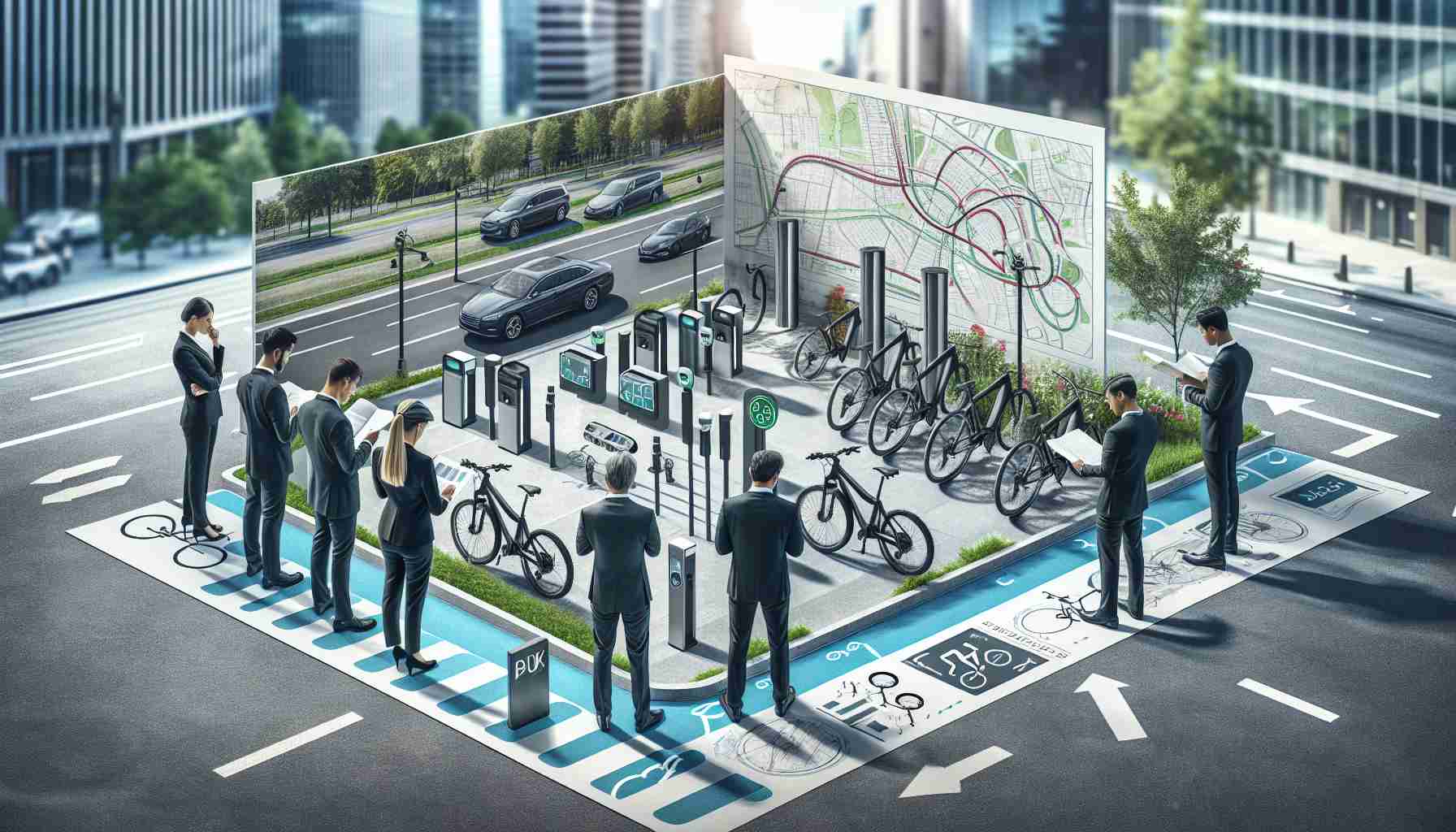Electric bicycles have soared in popularity across the United States, offering numerous benefits to riders. However, with their increasing use, concerns have inevitably arisen. From safety issues to fears of battery fires, critics and potential users have voiced apprehensions. Yet, a simple solution exists that could address almost any worry regarding electric bikes: investing in better cycling infrastructure.
One of the major concerns revolves around sharing the road with cars, particularly the worry of navigating alongside faster and heavier vehicles. The answer lies in the development of dedicated, separated bicycle lanes. By implementing comprehensive networks of protected bike lanes, cities can ensure the safety of e-bike riders, eliminating the risks associated with close proximity to motor vehicles. Furthermore, enhanced cycling infrastructure not only benefits e-bike riders but also serves car drivers by reducing traffic congestion and encouraging more people to switch to e-bikes for local trips.
Another issue frequently raised is the presence of teenagers on e-bikes, often causing anxiety for other road users. Once again, the solution lies in improved cycling infrastructure. If cities expand their bike lane networks, teenagers would have their own safe spaces to ride, separate from vehicular traffic. This approach has proven successful in other countries and can work in the United States as well.
Pedestrian safety is another legitimate concern. E-bike riders on crowded sidewalks can pose a risk to pedestrians. However, the availability of well-designed cycling infrastructure can help mitigate this issue. When presented with the option of riding on sidewalks or the narrow shoulder of a busy urban highway, cyclists often choose the relatively safer sidewalks. By investing in better cycling infrastructure, cities can provide a third, safe option: designated bike lanes.
Moreover, fears surrounding bike theft and battery fires during charging can also be addressed through enhanced cycling infrastructure. Deploying secure locking and charging stations can minimize the risk of theft and mitigate fire hazards. By providing designated areas equipped with safe charging infrastructure, cities can alleviate concerns over bike security and battery safety, ultimately encouraging more individuals to utilize e-bikes.
Investing in better cycling infrastructure not only addresses the immediate concerns of e-bike users but also brings broader benefits to the community. Improved bike lanes and secure charging stations can help reduce traffic congestion, lower emissions, and contribute to a healthier and more active population. Moreover, enhancing cycling infrastructure demonstrates a commitment to sustainable transportation options and inclusivity, ensuring safe and reliable mobility solutions for everyone.
As electric bicycles continue to revolutionize urban transportation, it is crucial for cities across the U.S. to adapt and embrace cycling infrastructure. While legitimate concerns surrounding safety and battery management exist, they can be effectively addressed through thoughtful urban planning and investment in infrastructure tailored to e-bike use. By prioritizing separated bike lanes and secure locking and charging stations, we can unleash the full potential of e-bikes as a cornerstone of urban mobility, making our cities safer, cleaner, and more accessible to all. It is not just about cyclists; it is about improving cities for everyone.
Electric bicycles have become increasingly popular in the United States, providing numerous benefits to riders. However, concerns have also arisen as their use has grown. One of the main worries is sharing the road with cars, particularly the challenge of navigating alongside faster and heavier vehicles. To address this, cities can invest in the development of dedicated, separated bicycle lanes. Implementing comprehensive networks of protected bike lanes ensures the safety of e-bike riders, eliminating the risks associated with close proximity to motor vehicles. This approach also benefits car drivers by reducing traffic congestion and encouraging more people to switch to e-bikes for short trips. (source)
Another common issue is the presence of teenagers on e-bikes, which can cause anxiety for other road users. Again, the solution lies in improved cycling infrastructure. By expanding bike lane networks, teenagers would have their own safe spaces to ride, separate from vehicular traffic. This approach has been successful in other countries and can be implemented in the United States as well.
Pedestrian safety is also a legitimate concern, as e-bike riders on crowded sidewalks can pose a risk to pedestrians. However, well-designed cycling infrastructure can help mitigate this issue. When faced with the choice between riding on sidewalks or the narrow shoulder of a busy urban highway, cyclists often opt for the comparatively safer sidewalks. By investing in better cycling infrastructure, cities can provide a viable alternative: designated bike lanes. These lanes would give cyclists a safe option, separate from both sidewalks and roads. source
Fears surrounding bike theft and battery fires during charging can also be addressed through enhanced cycling infrastructure. Deploying secure locking and charging stations can minimize the risk of theft and mitigate fire hazards. By providing designated areas equipped with safe charging infrastructure, cities can alleviate concerns over bike security and battery safety, ultimately encouraging more individuals to use e-bikes. source
Investing in better cycling infrastructure not only directly addresses e-bike concerns but also brings broader benefits to the community. Improved bike lanes and secure charging stations can help reduce traffic congestion, lower emissions, and contribute to a healthier and more active population. Additionally, enhancing cycling infrastructure demonstrates a commitment to sustainable transportation options and inclusivity, providing safe and reliable mobility solutions for everyone. source
As electric bicycles continue to revolutionize urban transportation, cities across the U.S. must adapt and embrace cycling infrastructure. While legitimate concerns surrounding safety and battery management exist, they can be effectively addressed through thoughtful urban planning and investment in infrastructure tailored to e-bike use. Prioritizing separated bike lanes and secure locking and charging stations unlocks the full potential of e-bikes as a cornerstone of urban mobility, making cities safer, cleaner, and more accessible for all.







